Yes, you did read that correctly — Cockatoo Brae. This remarkable phrase is, in fact, the name of a lane in Lerwick, Shetland, and it is also the name of the final yoke in my collection.
This design emerged from an exciting collaboration with my friend Ella. In Shetland, machine and hand knitting go very much, as it were, hand in hand. In fact, at certain crucial points in its twentieth-century story, machine knitting might be said to have saved the Shetland hand-knitting industry from extinction. The two crafts (and they are both crafts) are importantly imbricated, and perhaps especially so where the yoke sweater is concerned.
Hybrid yokes – where the body and sleeves are knitted by machine, and the yoke subsequently knitted on by hand – were one of the mainstays of the Shetland wool industry from the 1950s through the 1970s. I devote a chapter to this topic in my book, and you can read more about it there, but suffice it to say that, after my research I felt it was very important to include one such hybrid yoke design in my book. Cockatoo Brae is that yoke.
On one of my recent visits to Shetland, I was very keen to learn more about machine knitting from Ella, who runs her own business centred around the wonderful machine-knitted items that she designs and makes.
Ella’s Crofthoouse Cushions
At her studio in Cockatoo Brae, Ella introduced me to the process of creating machine-knitted fabric. Like many committed hand-knitters, I suppose I had certain lingering assumptions about what machine knitting involved (knitting by machine? surely this is the devil’s work?!) but these were quickly exploded. I discovered that the process was not only extremely skilled, but also – in the simple act of making stitches – much, much more like hand-knitting than I’d imagined. It is also quite physically demanding!

(A swatch we knitted on Ella’s machine)
When I returned home after my visit I began designing a chart using an interesting variant of the ubiquitous tree and star motifs that appear on countless Shetland yokes. It is no coincidence that the shades I chose echoed those of the swatch we had created in Cockatoo Brae. Much of the inspiration for Ella’s design work comes from the 1970s: a decade during which Shetland knitters were producing thousands of yokes for a buoyant commercial market, but when the advent of North Sea Oil also changed the face of the Shetland knitting industry. The 1970s are an interesting moment of transition in Shetland, and Ella’s work interrogates and reflects this. I wanted the palette of our yoke to reflect it too.
The bright green is Jamieson and Smith shade FC11 and the orange shade is 125. (This rich tomato-soup shade is one of my all-time favourite Jamieson and Smith colours – I absolutely love it!). For the main body of the sweater I chose FC58 – a wonderfully complex heathered brown that in fact has more individual colours blended in it than any other shade in the Jamieson and Smith palette. After Ella and I had settled on the chart and palette, I provided her with a pattern and she got to work creating the sweater’s machined components. (Ella will write in more detail about the process of knitting the body and sleeves on her machine, and you’ll be able to read about the process on her blog)
Some time later, I received this bundle in the post
As machine-knit yarn is oiled, I decided to block the separate pieces quite vigorously first so I could see that the hand-knit and the machine-knit fabric were behaving the same way, and that I could be sure that my gauge would match up. After blocking the pieces, I seamed them up with matress stitch. Ella had left small sections of ‘waste’ knitting at the tops of the sleeve and body pieces that could be unravelled to create a set of live stitches. So I unravelled the waste, set sleeves and body on a circular needle, and cast on a nine stitch steek over the cardigan’s front opening to enable me to knit the yoke on in the round.
Here’s the yoke in progress.
Here it is blocking
Creating this yoke with Ella was a fascinating and really enjoyable process for me, and I felt I understood much more about the textile practices and history I’d been researching through the simple act of knitting this garment. Sometimes making really is learning.
If you’d like to create your own Cockatoo Brae in exactly the same way we did, I’ve included instructions for flat machine-knitting body and sleeves in the book. But don’t worry –if you’d prefer to hand-knit the design in its entirety – working the whole garment in the round and then steeking it open afterwards – those instructions are also included.
We shot these photographs on a lovely autumn day around the lower slopes of Ben Lawers and Meal nan Tarmachan, where Tom was running a hill race. Tom ran very well, and I think the photographs he took after the race show the garment perfectly suited to its setting.
I’d like to give a big shout-out to Tom today, who has really shared my Yoke vision, and whose considerable skills as a photographer are in evidence throughout. His images – which beautifully illustrate each garment in a separate, distinctive location suited to its style – are an essential element of the larger creative process behind this book. Thanks, Tom x.
You’ll find more information about Cockatoo Brae here
And the book is available to pre-order here

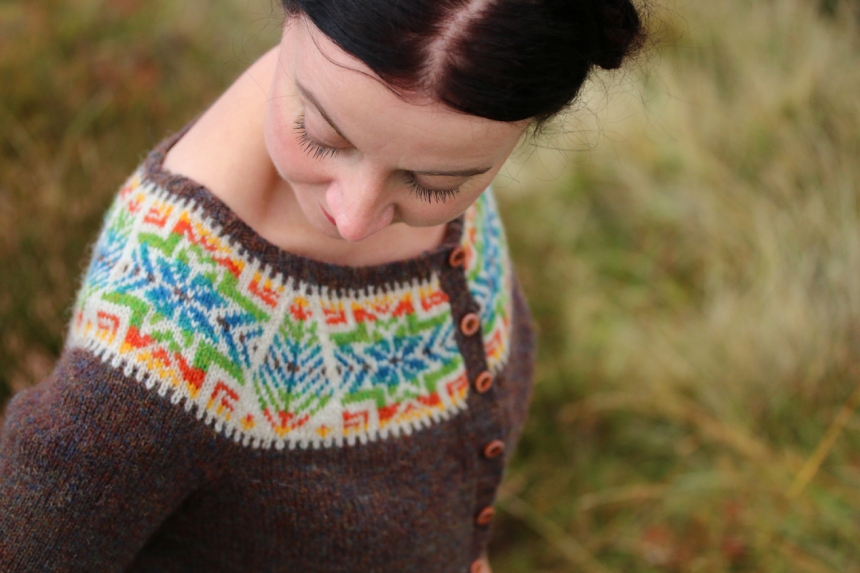

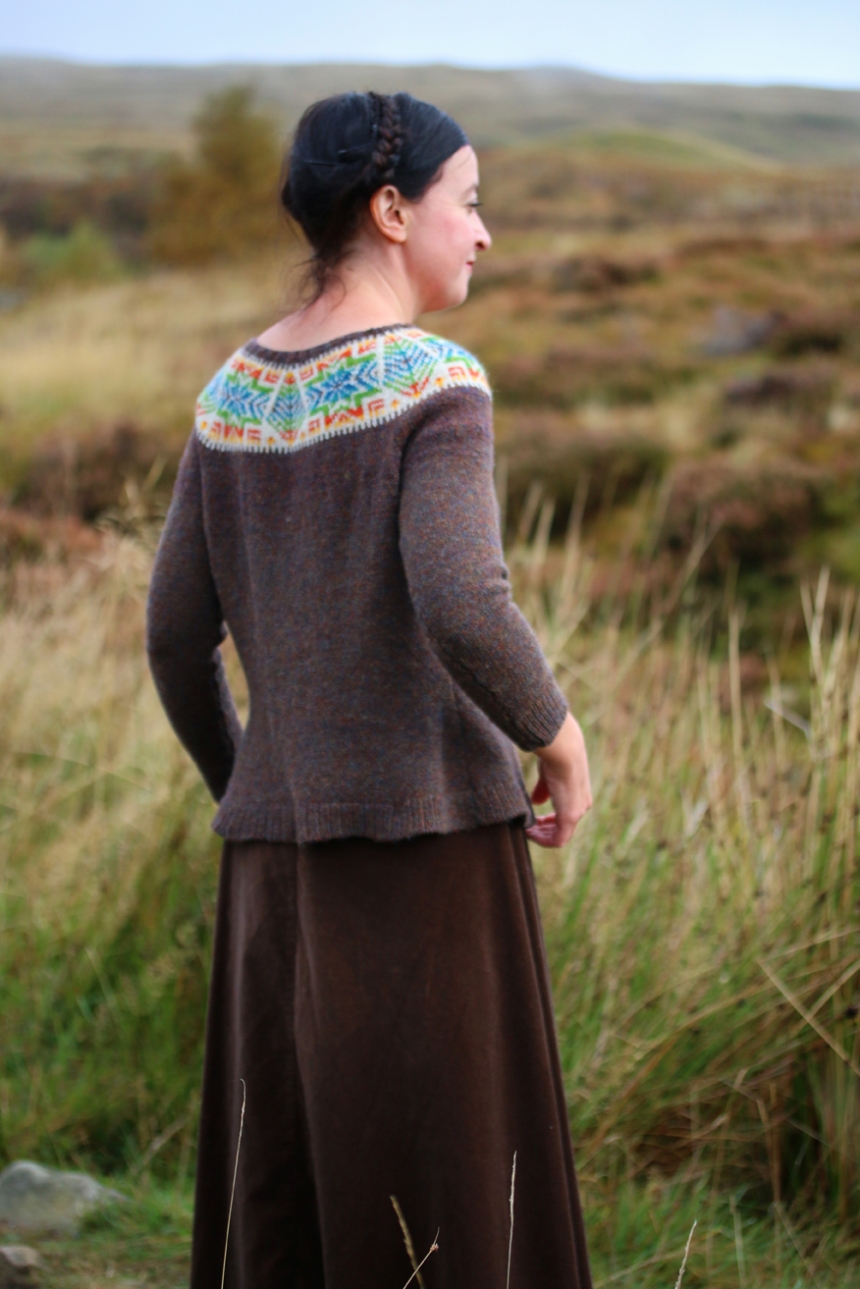



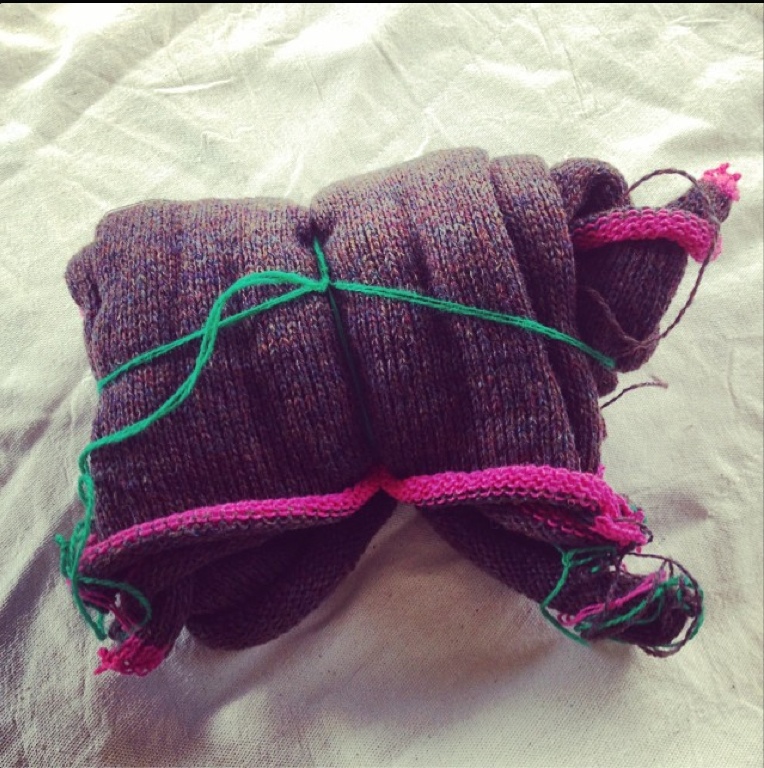
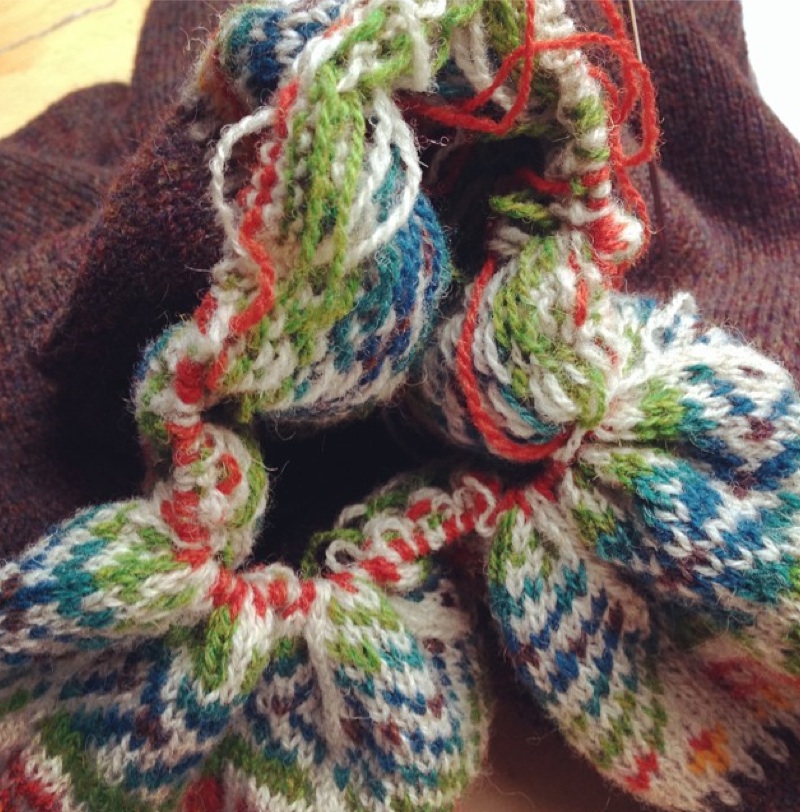


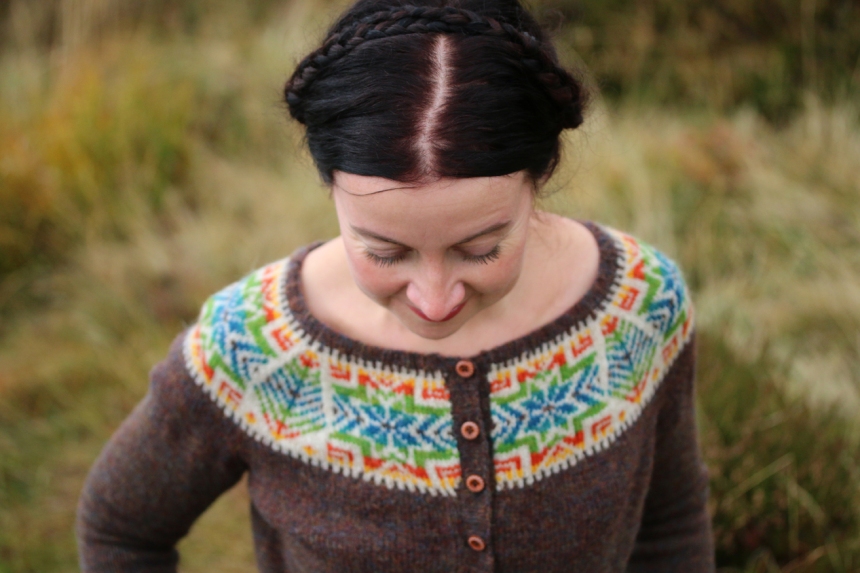


Amazing pattern, amazing project and totally great photography. I love it all!
LikeLike
I agree with Laura- whenever anyone suggests that using my machine is “cheating”, I have a giggle and ask them if they would consider using a sewing machine as the same. Especially when the need to earn a living is intrinsic to the process, these crafts support each other beautifully!
So looking forward to our books arriving at Sunspun!
Xx
LikeLike
I was a quilter for many years and was always mildly amused at those who looked down their noses at machine quilting. I didn’t see many of them piecing their quilts by hand, only insisting that hand-quilting was the only authentic way. I’m fascinated by the over-romanticizing of hand-work, especially as it is paired with devaluation of same primarily because it is seen as the work of women and, even worse, the old. Heaven forbid that one is an old woman. Who knits. Help! I’ve become an anachronism!
LikeLike
Anyone got their book yet. ? Thought I might have received mine by now.
LikeLike
LOVE! I can’t wait to get started on this one :)
LikeLike
Well, you made me look up ‘imbricated’ :) Excellent word. I do appreciate your explanation of your
feeling re machine knitting part as I sort of felt the same way. I like the flare of the hem of the sweater and the colours are intriguing as they are so ‘un -traditional’! GOOD JOB to you and thanks to Tom for his marvelous photography. Spiffy :) A toast to both of you!!
LikeLike
I’ve so enjoyed reading about each of your ‘yokes’, despite my not being a knitter. I love your painterly eye and your feel for how the land and its people and history inform each pattern. Do I have a favourite? Well, the one I’m reading about is my favourite…until the next one comes along! Special mention though to the glorious photos of the Buchanan design.
LikeLike
I really adore this collection! Wonderfully put together and yay! to Tom for the excellent photos.
LikeLike
“Sometimes making really is learning”
YES!
I love your whole YOKES collection; it is beautiful and thorough and thoughtful and intelligent and will enable knitters everywhere to knit wondrous YOKES! But this one seems extra special because of its connections with the working knitwear industry (and its history) in Shetland, and because of its links with process and learning. It is lovely to see Ella’s involvement and the connections between your time in her knitting studio, the swatch you made, and the superlative design which has grown out of that context. Ella’s exhibition about knitwear during the oil boom at the Shetland Textile Museum was moving and beautiful and it is lovely to see traces of that era reflected in your design…Cockatoo Brae for me embodies the sense of discovery, history, process and friendship that are everywhere in the gorgeous forthcoming tome that is YOKES.
I can totally relate to your former perceptions of machine knitting and subsequent revelations; I felt similar when I discovered Amy Twigger Holroyd and her amazing work which combines both machine and hand-knitting and which seems every bit as dextrous and skilled as hand-knitting.
Thanks for your wonderful insights into your process, and HUZZAH to Tom for his superlative photographs, I think the places and contexts in which you photograph your amazing creations are integral to their overall MARVELLOUSNESS XXXXX
LikeLike
I am a hand knitter who occasionally does machine knitting as well. It’s always interesting for me to know how other hand knitters see the machine knitting – as “cheating” or as a different kind of craft. I definitely vote for the last one. There is a lot of work involved that is done by hand and it takes quiet some time to master the craft of machine knitting. And yes, it is physically demanding!
LikeLike
Each and every one a gem, Kate. I so look forward to the book’s arrival. And please thank Tom again for his exemplary photography. Your books are a pleasure to see as well as to read.
LikeLike
As both a hand and machine knitter, I thank you for your favourable comments on machine knitting. I love your hybrid jumper, the yoke is breath-taking and Ella’s machine knit jumper body is perfect.
LikeLike
thank you for investigating the machine knitting connection. if knitting and needlework are to be seen as a vital part of working women’s history, and not just a consumerist pinny porn pasttime, what and how the artisanal working women are knitting needs to be honored and investigated. one more reason i think of you as the Intelligent Craftafarian. interested in the north sea oil angle. without spoiling sales of your book, could you give us a little taste of that info here?
LikeLike
Dear Kate,
You have such a lovely painterly style. Just beautiful, I really would like to make this one.
Thanks Tom for the photographic vision .
Linda
LikeLike
Oh, yeh, I ordered Yokes, my love is giving it to me for Santaclaus :) I have been so in awe, and want to knit all the patterns.
LikeLike
Tom’s photography skills are as amazing as your knit design. The two of you are an awesomely talented team! Can’t wait for my book to arrive.
LikeLike
I have ordered the book Kate and I love the way you have tantalised us by “drip feeding ” the designs. I get an added pleasure from your blog pics as I am a Helensburgh girl, married on the shores of Loch Lomond, but sadly living now in the south of England. You have brought little bits of home to me with every blog!
LikeLike
As beautiful as your designs are I’m really looking forward to reading the stories behind them. Lovely work as always
LikeLike
Beautiful sweater ~ perfect color choices and the setting is so lovely too!
LikeLike
Absolutely wonderful. I, too, like to combine machine and hand knitting. The trees are a very crafty (in both senses of the word!) device for shaping, leaving the snowflake or windflower well alone.
Can’t wait to get the whole book in my hands now.
LikeLike
This is too perfect! I love this one the most and it’s true serendipity: my mother-in-law gave me her knitting machine last Sunday. The only reasons I accepted it was because I had just read in Ann Feitelson’s book on Fair Isle knitting that Shetland sweaters were made using the combination of machine-knit bodies and sleeves and hand knit yokes and also, the ladies who were machine-knitting in Sanquhar won me over on the idea and gave me inspiration.
LikeLike
Thank you for your fine text and for your respect you show for hand knitting machine. And thanks to your Tom for the great pictures he takes
LikeLike
Another brilliant peace!
LikeLike
piece, of course. I hit the “send” button too fast.
LikeLike
This is so beautiful. Your work Kate bring so much inspiration and sense of belonging to people in Scotland. I am so grateful to be able to see and knit something that make me feel part of this beautiful place.
Thank you for all the dedication, care and love for the very old art of knitting!
LikeLike
Absolutely gorgeous, you have updated the shape perfectly to suit the style of today. And wonderful colours too. I am very glad you have given instructions for the machine knitted body, once I get a bit of time to get to know my machine a bit better, this will definitely be high on the to do list – I can envisage a few in different colours! You really have excelled in this project and I can’t wait to receive the book. X
LikeLike